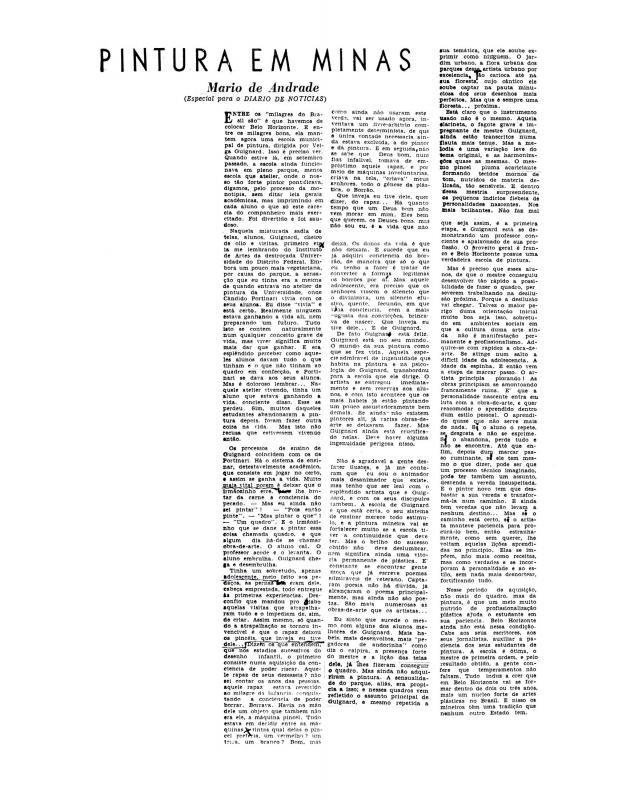Folklore studies are an important part of the development of the Brazilian people. Mário de Andrade (1893–1945) sought to resolve the dilemma of his modernist view in terms of popular works, hoping to include the countless traditions that existed everywhere in Brazil. In the 1920s, he went on several ethnographic expeditions in the north and northeastern parts of Brazil, and in 1938, organized ethnographic research missions to document musical folklore and collect examples of material culture. In São Paulo (1935–38), the Sociedade de Etnografia e Folclore was founded when de Andrade was the director of the Department of Culture, fully aware of the urgent need to train researchers who were operating in various areas under his control.
Revista, a modernist magazine, was published in 1934; its mission was to report on the cultural heritage at the Municipal Archives in São Paulo. The following year, with Mário de de Andrade as director and Sérgio Milliet as secretary, the magazine was incorporated into the Department of Culture and published news of cultural activities. It expanded its editorial profile to include unpublished articles about history, ethnology, sociology, anthropology, and other matters concerning the preservation of Brazil’s collective memory. For three decades it played an important role in the cultural scene in São Paulo and the country as a whole. Anthropologists and ethnologists of the stature of Claude Lévi-Strauss and Herbert Baldus were key figures in the establishment of an anthropological understanding that took Brazilian literary and artistic conversation to new levels.
[As complementary reading, see the following articles by Mário de Andrade in the ICAA digital archive: “Catálogo da exposição promovida pelo Ministério da Educação” (doc. no. 783296); “Decadencia da influencia franceza no Brasil” (doc. no. 1110806); “Pintura em Minas” (doc. no. 1110459); “Primitivos” (doc. no. 781294); and “Serviço do Patrimônio Historico e Artistico Nacional” (doc. no. 781826)].




